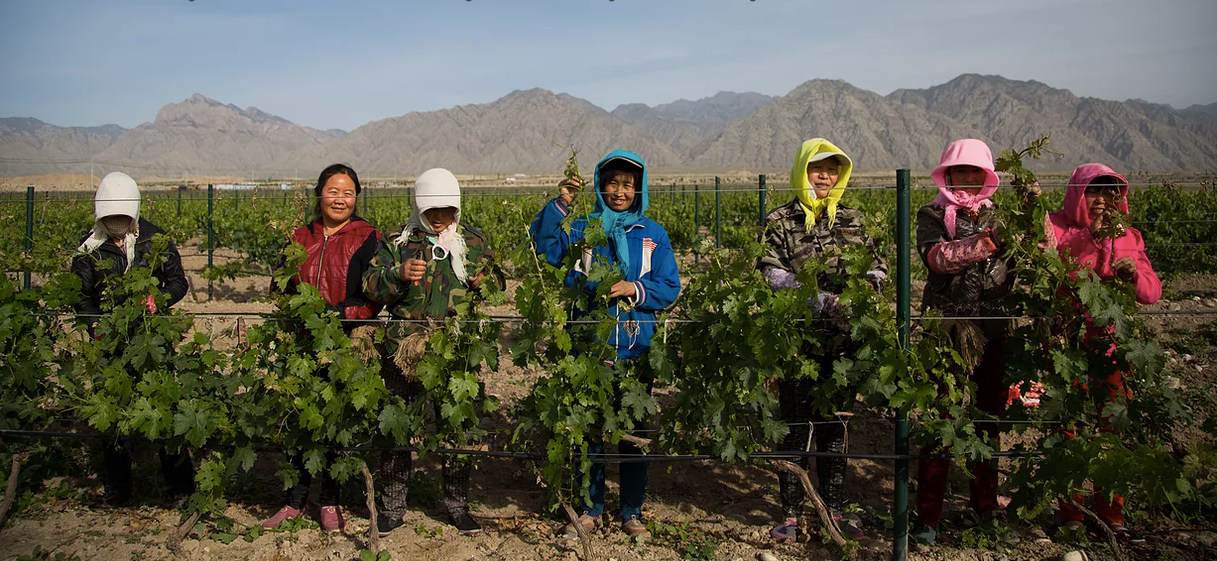
In 1999, the patriarch of Silver Heights, Gao Lin, had a premonition: one day, his home province of Ningxia would become a sought-after region for world-class wines. He began planting Cabernet Sauvignon vines sourced from France, and convinced his daughter, Gao Yuan (also known as Emma), to voyage abroad to Bordeaux and there to enroll in a Masters of Oenology program.
TL;DR
- In 1999, the patriarch of Silver Heights, began planting Cabernet Sauvignon vines and convinced his daughter, Gao Yuan to voyage abroad to Bordeaux and enroll in a Masters of Oenology program
- Since their first vintage in 2007 was met with astonished accolades by both domestic and international experts, they continued to focus on making the highest quality wine and developing the Ningxia terroir
- Even though Gao Yuan was trained in Bordeaux, they use New World techniques - unearthing of vines

While in France, Emma had the opportunity to intern at several historic Bordeaux wineries, including the world-famous Château Calon-Ségur. She quickly became close friends with the chateau's winemaker, Thierry Courtade, whose family has been making wine at Calon-Ségur for three generations. Their friendship deepened into love, and they were married in 2003. In 2005, Emma returned home to China as one of the few Chinese women with a diplôme national d’oenologue, and Thierry and their daughter, also named Emma, followed soon after. The Younger Emma though still young is poised to become the third-generation owner of Silver Heights. After returning, Emma first briefly worked for Torres China, one of the country's most prestigious wine importers. Her true passion, however, lay in winemaking, and she collaborated with her father and Thierry to begin making a very small amount of wine at her parents' farm on the then-outskirts of Yinchuan. One day, out of the blue, Emma presented an unlabelled magnum bottle of her 100% Cabernet Sauvignon to Alberto Fernandez, the managing partner of Torres China. He was blown away, and immediately proposed the following to her: she would make wine full-time, and Torres would distribute it. Thus, Silver Heights was finally born. And that first wine? It became Emma's Reserve, and has gone on to acclaim.

Since their first vintage in 2007 was met with astonished accolades by domestic and international wine experts, Gao Lin, Emma, and Thierry have continued to focus on making the highest quality wine possible and on developing the Ningxia terroir. Terrior The Helan Mountain Eastern Foothills are located in a unique location topographically. Situated northwest of the capital city of Yinchuan, this wine region lies between the western part of Helan Mountain and the eastern part of Yellow River. The mountains are particularly important to wine cultivation here, as they block the freezing winds that roll across the Tengger Desert. The Yellow River is similarly important, as it provides the irrigation necessary to cultivate the grapes in this arid place. Also of note is the altitude of the wine region, which ranges from 1,100 to 1,300 meters (3600 to 4260 feet) above sea level. The climate is extreme dry, with an average precipitation of only 193mm (7.6in) between July and September-- similar to the Mendoza region in Argentina. What the region lacks in rain, it makes up for in sunshine, receiving 1700-2000 hours per year. Diurnal range can reach 12-15 ºC (21-27 ºF), a critical factor for achieving fully ripe grapes that retain their acidity. There are two soil types in the Helan Mountain Eastern Foothills wine region: Sierozem and Eolian. Sierozem, a desert soil, is characterized by brownish gray color at the surface and lighter color below, and is based in a carbonate or hardpan layer. Different ratios of gravel, sand and clay within the Sierozem soil account for variations across wineries in the area. Eolian soil is made of wind deposited materials that consist primarily of sand or silt-sized particles. Silver Heights’ vineyards are all on Sierozem soil, with a high concentration of gravel. One unique viticultural feature of the region is the practice of burying the vines under 30 cm (12 inches) of earth to protect them during the harsh, freezing winters.




















































